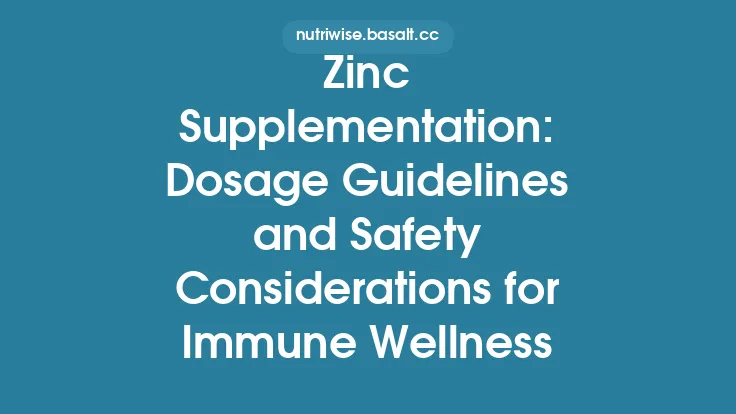The aging process brings a cascade of physiological changes that can dramatically alter how the body handles nutrients, botanicals, and other dietary supplements. While many people assume that a supplement that works well in their twenties will have the same effect in their sixties, the reality is far more nuanced. Age‑related shifts in absorption, distribution, metabolism, and excretion (ADME) intersect with the growing likelihood of polypharmacy, altered organ function, and changes in the gut microbiome. Understanding these dynamics is essential for anyone—whether a health‑care professional, a caregiver, or an individual supplement user—who wants to make informed, safe choices about supplement use throughout the lifespan.
Physiological Changes Across the Lifespan
| Age Range | Key Physiological Shifts | Implications for Supplement Handling |
|---|---|---|
| Young adulthood (18‑35) | Peak gastric acid production, optimal renal filtration, robust hepatic enzyme activity, high muscle mass | Efficient absorption of most nutrients; lower risk of accumulation. |
| Middle age (36‑55) | Gradual decline in gastric acidity, modest reduction in renal GFR (≈1 mL/min/yr), early signs of hepatic enzyme variability, onset of sarcopenia | Slightly reduced absorption of minerals (e.g., iron, calcium) and slower clearance of fat‑soluble compounds. |
| Older adults (≥65) | Marked hypochlorhydria, 30‑40 % reduction in GFR, decreased hepatic CYP450 activity, altered plasma protein binding, changes in gut microbiota diversity, increased adipose tissue proportion | Pronounced malabsorption of certain vitamins/minerals, prolonged half‑life of lipophilic supplements, heightened susceptibility to drug‑supplement interactions. |
These changes are not uniform; genetics, lifestyle, comorbidities, and medication regimens modulate the trajectory of each individual’s aging curve. Nevertheless, the trends provide a framework for anticipating how supplement pharmacokinetics may evolve with age.
Pharmacokinetic Shifts and Their Impact on Supplements
- Absorption
- Gastric pH: Reduced acidity impairs the solubilization of minerals such as iron (Fe²⁺) and calcium carbonate, favoring formulations that are less pH‑dependent (e.g., iron bisglycinate, calcium citrate).
- Intestinal transporters: Age‑related down‑regulation of carrier proteins (e.g., SLC5A1 for glucose‑linked vitamins) can limit uptake of B‑complex vitamins and certain amino‑acid‑derived supplements.
- Distribution
- Plasma proteins: Lower albumin and α‑1‑acid glycoprotein levels in older adults increase the free fraction of protein‑bound supplements (e.g., vitamin D metabolites), potentially amplifying both efficacy and toxicity.
- Body composition: Higher fat mass expands the volume of distribution for lipophilic agents (vitamin E, coenzyme Q10, omega‑3 fatty acids), prolonging their elimination half‑life.
- Metabolism
- Cytochrome P450 (CYP) enzymes: Age‑related decline in CYP3A4, CYP2C9, and CYP2D6 activity reduces the metabolic clearance of many herbal constituents (e.g., St. John’s wort hyperforin) and fat‑soluble vitamins, raising the risk of accumulation.
- Phase II conjugation: Glucuronidation and sulfation pathways may be preserved longer than Phase I oxidation, but inter‑individual variability can still affect the biotransformation of flavonoids and polyphenols.
- Excretion
- Renal clearance: A 30 % drop in GFR by age 70 translates into slower elimination of water‑soluble vitamins (B‑complex, vitamin C) and mineral ions (magnesium, potassium).
- Biliary excretion: Impaired bile flow in some elderly patients can hinder the removal of fat‑soluble vitamins and certain phytosterols.
Collectively, these pharmacokinetic alterations mean that the same daily dose may produce higher plasma concentrations—and therefore a greater risk of adverse effects—in an older adult compared with a younger counterpart.
Age‑Specific Polypharmacy Concerns
Polypharmacy, defined as the concurrent use of five or more prescription medications, becomes increasingly common after age 65. When supplements are added to an already complex medication regimen, the probability of clinically relevant interactions rises sharply. Key considerations include:
- Enzyme inhibition/induction: Many over‑the‑counter supplements (e.g., green tea catechins, curcumin) can inhibit CYP enzymes, potentiating the effects of drugs such as statins or anticoagulants. Conversely, certain botanicals (e.g., ginseng) may induce CYP3A4, reducing drug efficacy.
- Transporter competition: Supplements containing high doses of potassium or magnesium can compete with prescription diuretics for renal tubular transporters, affecting electrolyte balance.
- Additive pharmacodynamics: Calcium supplements combined with calcium‑channel blockers may augment hypotensive effects, while high‑dose vitamin K can counteract warfarin anticoagulation.
A systematic medication review that includes all supplements—herbal, vitamin, mineral, and specialty formulations—is essential before initiating any new product in older adults.
Vitamins and Minerals: Dosage Adjustments by Age
| Nutrient | Typical Age‑Related Change | Recommended Adjusted Dose* | Rationale |
|---|---|---|---|
| Vitamin D (cholecalciferol) | Decline in skin synthesis, reduced renal 1α‑hydroxylase activity | 800–2000 IU/day (vs. 600 IU for <70) | To maintain serum 25‑OH‑D ≥ 30 ng/mL and support bone health. |
| Vitamin B12 (cobalamin) | Decreased intrinsic factor production, atrophic gastritis | 500–1000 µg/day oral or 1000 µg/month intramuscular | Compensates for malabsorption; prevents neurocognitive decline. |
| Calcium | Reduced intestinal calcium absorption (~30 % lower) | 1200 mg/day (vs. 1000 mg for <50) | Supports bone remodeling; split doses to improve absorption. |
| Iron | Lower gastric acidity, higher hepcidin levels | 8 mg/day (women) or 6 mg/day (men) – avoid high‑dose iron unless deficient | Prevents oxidative stress and gastrointestinal irritation. |
| Magnesium | Declining renal excretion, increased risk of constipation | 350–420 mg/day (vs. 310–320 mg for younger adults) | Supports neuromuscular function; monitor for hypermagnesemia in renal impairment. |
| Folate | Reduced hepatic conversion to 5‑methyltetrahydrofolate | 400–600 µg/day (vs. 400 µg for adults) | Supports homocysteine metabolism; caution with high doses in B12 deficiency. |
\*Doses are illustrative and should be individualized based on laboratory values, dietary intake, and comorbid conditions.
Herbal and Botanical Supplements: Age‑Related Sensitivities
Herbal products are often perceived as “natural” and therefore safe, yet many contain bioactive compounds that interact with physiological pathways altered by aging.
- Ginkgo biloba: Possesses antiplatelet activity. In older adults on aspirin or clopidogrel, even modest Ginkgo doses (120 mg/day) can increase bleeding risk.
- Echinacea: Stimulates immune function via cytokine modulation. In immunosenescent individuals, excessive stimulation may precipitate autoimmune flares.
- Kava (Piper methysticum): Metabolized by CYP2D6; reduced enzyme activity in the elderly can lead to hepatotoxicity at standard doses (250 mg three times daily).
- Saw palmetto: Contains fatty acids that may affect androgen metabolism. In men receiving 5‑α‑reductase inhibitors, concurrent use can alter prostate‑specific antigen (PSA) levels, complicating cancer screening.
When prescribing or recommending botanicals to older adults, clinicians should prioritize standardized extracts with known phytochemical profiles, start at the lowest effective dose, and monitor for adverse events.
Omega‑3 Fatty Acids and Age‑Related Cardiovascular Interactions
Long‑chain omega‑3s (EPA/DHA) are widely used for cardiovascular health, but age modifies both their pharmacodynamics and safety profile.
- Pharmacokinetics: Increased adipose tissue in older adults expands the distribution volume, leading to a slower decline in plasma EPA/DHA after cessation.
- Bleeding risk: While low‑dose fish oil (≤1 g/day) is generally safe, higher doses (≥3 g/day) can potentiate anticoagulant effects, especially in patients on warfarin, direct oral anticoagulants (DOACs), or antiplatelet agents.
- Lipid oxidation: Age‑related decline in antioxidant defenses (e.g., reduced glutathione) may increase susceptibility to lipid peroxidation from oxidized fish oil, underscoring the importance of high‑quality, low‑peroxide products.
A pragmatic approach for older adults is to aim for 1–2 g/day of combined EPA/DHA, preferably from purified, molecular‑distilled sources, and to reassess coagulation parameters after initiating therapy.
Bone Health Supplements and Age‑Related Calcium‑Phosphate Balance
Beyond calcium and vitamin D, several micronutrients influence bone remodeling, and their interactions become more pronounced with age.
- Vitamin K2 (menaquinone‑7): Works synergistically with vitamin D to activate osteocalcin. In older adults on vitamin K antagonists (e.g., warfarin), high‑dose K2 can antagonize anticoagulation, necessitating INR monitoring.
- Boron: Modulates calcium and magnesium metabolism; doses of 3 mg/day have shown modest improvements in bone mineral density (BMD) without adverse effects.
- Strontium citrate: Competes with calcium for incorporation into bone matrix; while it can increase BMD, it may also interfere with DXA measurements and elevate cardiovascular risk in susceptible elders.
Clinicians should evaluate baseline mineral status, renal function, and concurrent anticoagulant therapy before recommending these agents.
Cognitive Support Supplements in Older Adults
Cognitive decline is a major concern in aging, prompting interest in nutraceuticals such as phosphatidylserine, acetyl‑L‑carnitine, and certain polyphenols.
- Phosphatidylserine (PS): Typically dosed at 100 mg three times daily. In older adults with compromised hepatic function, high PS intake may affect membrane phospholipid turnover, potentially altering drug distribution.
- Acetyl‑L‑carnitine (ALC): Enhances mitochondrial function; doses of 500–1000 mg/day are generally well tolerated, but in patients with thyroid disorders, ALC can exacerbate hyperthyroid symptoms.
- Curcumin (standardized to ≥95 % curcuminoids): Exhibits anti‑inflammatory and antioxidant effects. Its poor bioavailability is often addressed with piperine, which inhibits CYP3A4 and can raise plasma levels of co‑administered drugs (e.g., statins).
Evidence supports modest benefits for memory and executive function, but clinicians should weigh these against the potential for drug‑supplement interactions, especially in polypharmacy contexts.
Monitoring and Clinical Assessment Strategies
- Baseline Laboratory Panel
- Serum 25‑OH‑vitamin D, calcium, magnesium, phosphorus, ferritin, B12, folate, and renal/hepatic function tests.
- Lipid profile and inflammatory markers (CRP, IL‑6) when initiating omega‑3 or anti‑inflammatory botanicals.
- Medication Reconciliation
- Conduct a comprehensive review that includes prescription drugs, over‑the‑counter medications, and all dietary supplements.
- Use interaction databases (e.g., Natural Medicines Comprehensive Database) that incorporate age‑specific pharmacokinetic data.
- Therapeutic Drug Monitoring (TDM)
- For narrow‑therapeutic‑index drugs (e.g., warfarin, digoxin, lithium), obtain baseline and follow‑up levels after adding or adjusting supplements.
- Adverse Event Surveillance
- Encourage patients to report new symptoms such as unexplained bruising, gastrointestinal upset, changes in cognition, or altered urine output.
- Implement periodic questionnaires (e.g., the Supplement Use and Side‑Effect Checklist) during routine visits.
- Dose Titration Protocol
- Start at 25‑50 % of the adult maintenance dose for new supplements in adults ≥65, then titrate upward every 2–4 weeks based on tolerance and laboratory feedback.
Practical Recommendations for Different Age Groups
| Age Group | Core Principles | Example Regimen Adjustments |
|---|---|---|
| 18‑35 | Standard adult dosing; focus on preventive nutrition; minimal polypharmacy concerns. | Vitamin D 800 IU/day, calcium 1000 mg split, omega‑3 1 g EPA/DHA. |
| 36‑55 | Anticipate early declines in gastric acidity; monitor for emerging chronic conditions. | Switch from calcium carbonate to calcium citrate, consider B12 sublingual 500 µg if gastritis present. |
| ≥65 | Prioritize safety: lower starting doses, rigorous medication review, renal/hepatic function monitoring. | Vitamin D 1500 IU/day, calcium 1200 mg split, magnesium 350 mg/day, omega‑3 1–2 g EPA/DHA, avoid high‑dose iron unless proven deficiency. |
Additional tips:
- Timing: Take calcium and iron supplements at least 2 hours apart from each other and from thyroid medication to avoid chelation.
- Food matrix: Fat‑soluble vitamins (A, D, E, K) are best absorbed with a meal containing 5–10 g of dietary fat.
- Hydration: Adequate fluid intake supports renal clearance of water‑soluble vitamins and reduces the risk of nephrolithiasis when high‑dose vitamin C is used.
Future Directions and Research Gaps
- Pharmacogenomics: Large‑scale studies are needed to map age‑related variations in CYP enzyme genotypes and their impact on supplement metabolism.
- Microbiome‑Supplement Interplay: The aging gut microbiota may alter the biotransformation of polyphenols and fiber‑based prebiotics, influencing systemic exposure.
- Longitudinal Safety Registries: Systematic tracking of supplement use in older adults could clarify dose‑response relationships for rare adverse events (e.g., hepatotoxicity from kava).
- Standardized Dosing Frameworks: Development of age‑adjusted reference intake (ARI) values for botanicals, akin to the Dietary Reference Intakes (DRIs) for vitamins and minerals, would aid clinicians in prescribing evidence‑based doses.
By integrating an understanding of age‑related physiological changes, the nuances of polypharmacy, and the specific pharmacokinetic profiles of individual supplements, health‑care providers and informed consumers can navigate the complex landscape of supplement interactions with greater confidence. Tailoring supplement choices to the unique needs of each life stage not only maximizes potential benefits but also safeguards against unintended harm—an essential balance in the pursuit of lifelong wellness.





